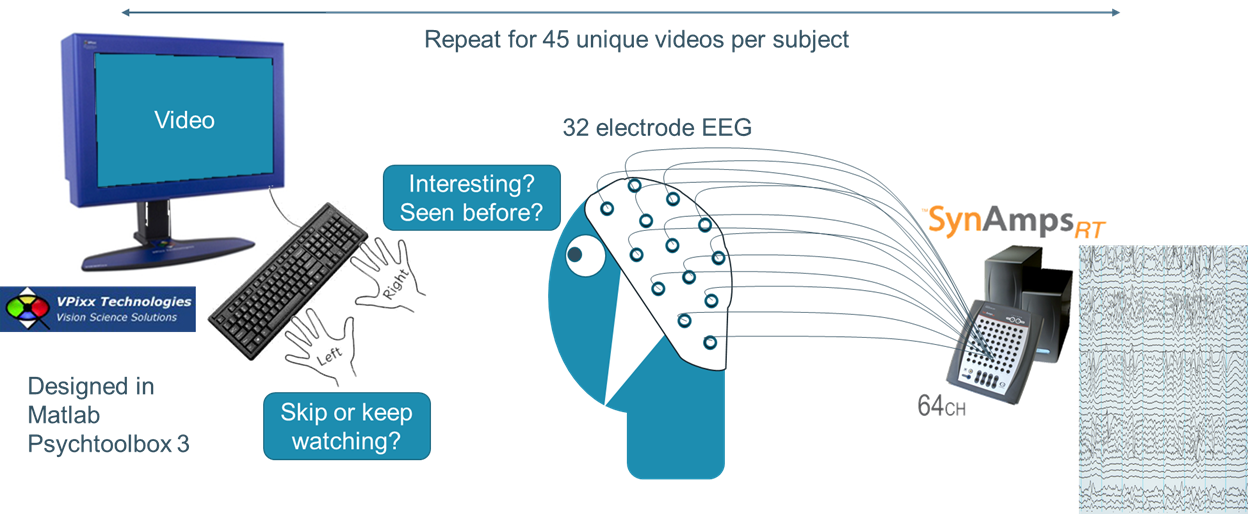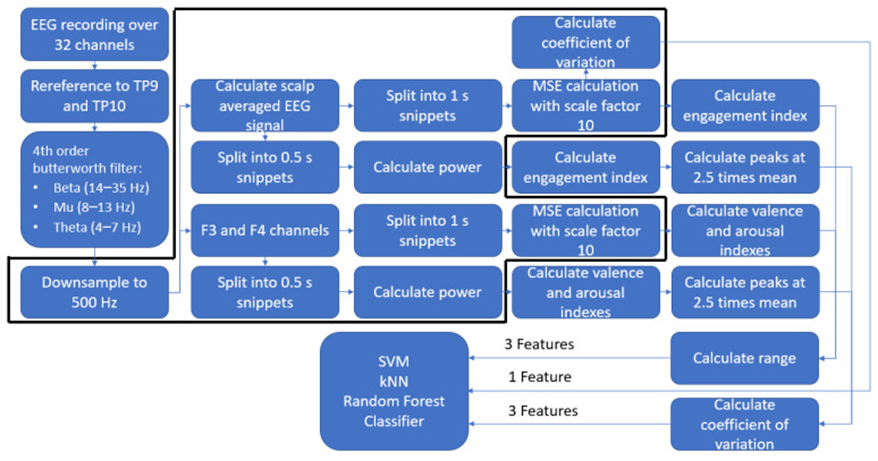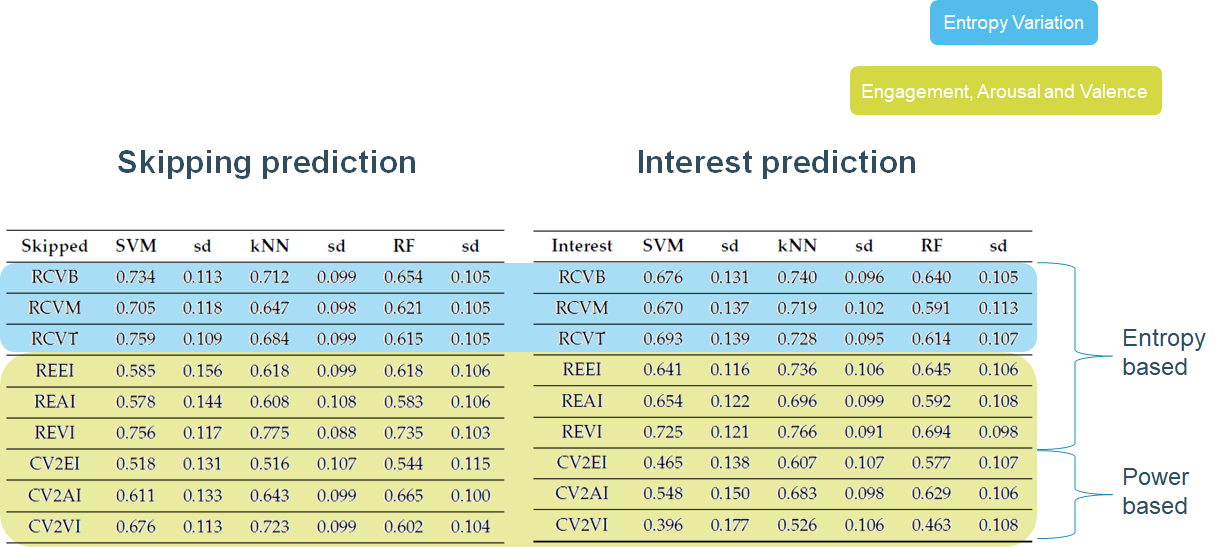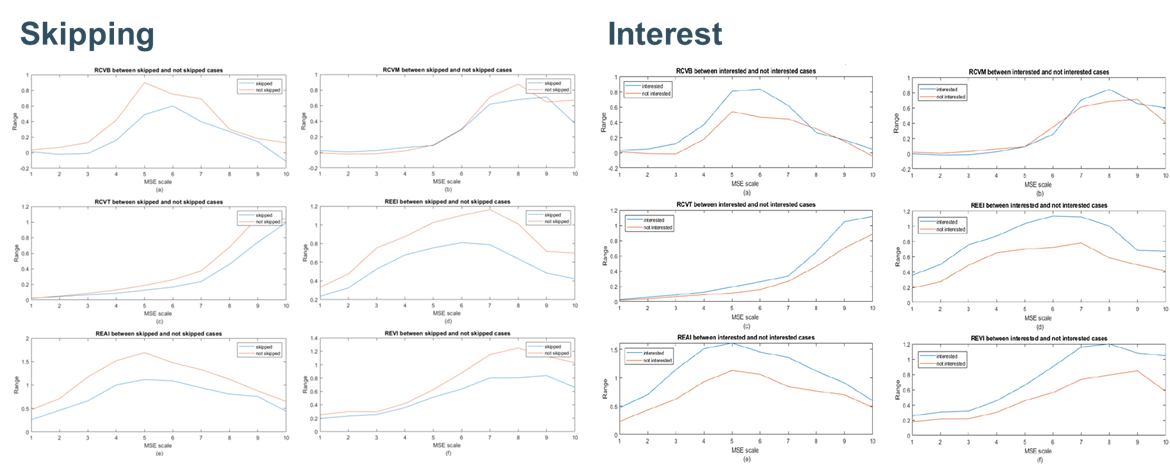1000/1000
Hot
Most Recent
This video is adapted from 10.3390/e21101014
In this video, researchers will be talking about Predicting Premature Video Skipping and Viewer interest from EEG recording and explain the experimental setup and results.
First, he will go over the experimental design. Researchers recruited 4 healthy participants and selected 45 videos for them to view during their experiment, based on their interest. After signing an informed consent form, the subjects were seated 70cm away from a ViewPixx monitor and were asked to rest their left hand on the spacebar and their right hand on the numpad. Researchers applied 32 active EEG electrode in a 10-20 system to their scalp which recorded EEG through a synamps rt 64-channel amplifier. During the experiment, the participants were instructed to watch the 45 videos and press the spacebar when they wanted to skip this video, upon deciding to skip, the video ended. After each video, or when the video was skipped, they were asked wether they found the video interesting or if they had seen it before. The experiment was designed using matlab and the Psychtoolbox 3 toolbox.

The data recorded during the experiment, researchers subsequently preprocessed through rereferencing and filtered into the beta, mu and theta bands. After downsampling, researchers calculated the multiscale sample entropy of each second and the power of every half second of averaged scalp EEG. Researchers performed the same calculation for the EEG measured at the F3 and F4 locations on the scalp. Subsequently, researchers calculated the peak occurance, range, engagement, arousal and valence indices for both the power and entropy results which researchers used as features to train a support vector machine, a kNN classifier and a random forest classifier.

Researchers used a leave-one-subject-out cross validation strategy to calculate the performance of the classifiers. When predicting skipping behavior, the support vector machine managed an average accuracy of 75.8%, the kNN reached an accuracy of 82.2% and the random forest classifier reached 80% accuracy. For the prediction of interest, the classifiers reached 73.3, 78.3 and 75.5% accuracy, respectively.

Researchers then calculated which features may prove most informative for these classification tasks. The general conclusion was that the entropy features contained, on their own, enough information to reach an acceptable result for the classifiers for both interest and skipping predictions. Only the power features dipped below 50%.

If researchers assumed that a person generally will not skip a video they are interest in and when observing the entropy features in their multiscale form, they noticed that arousal, valence and engagement indices were higher when a person was interested and not skipping aswell as the range of variations being higher when interested and not skipping.

The next steps in this research is to try more features and recruit more subjects to get a better idea how to exactly process interest and predict skipping behavior. They are also interested in expanding this by possibly using emotional videos to see the alteration in the signals. Researchers eventual goal is to create a BCI which can predict in real-time when a person is tired of their current activity.